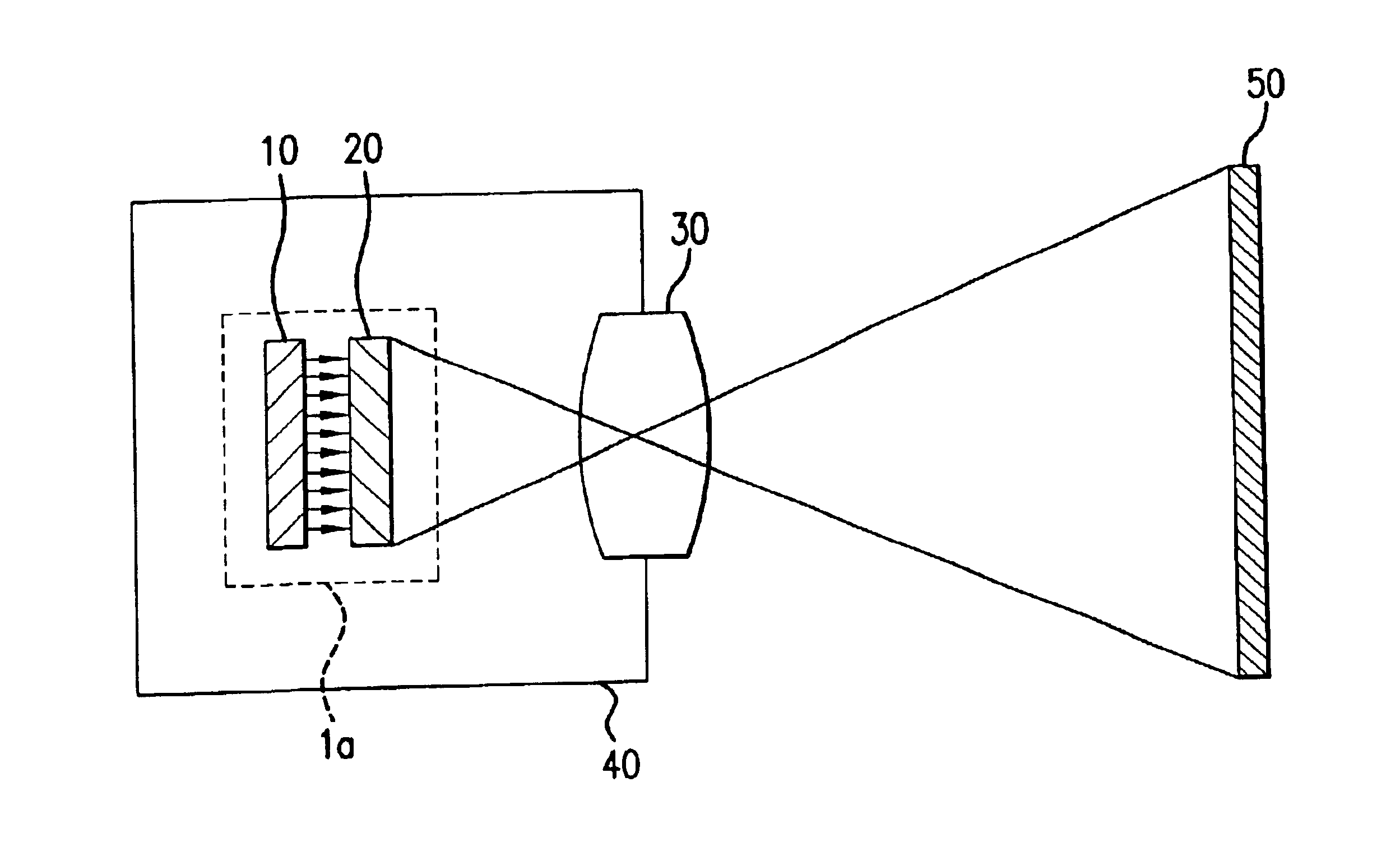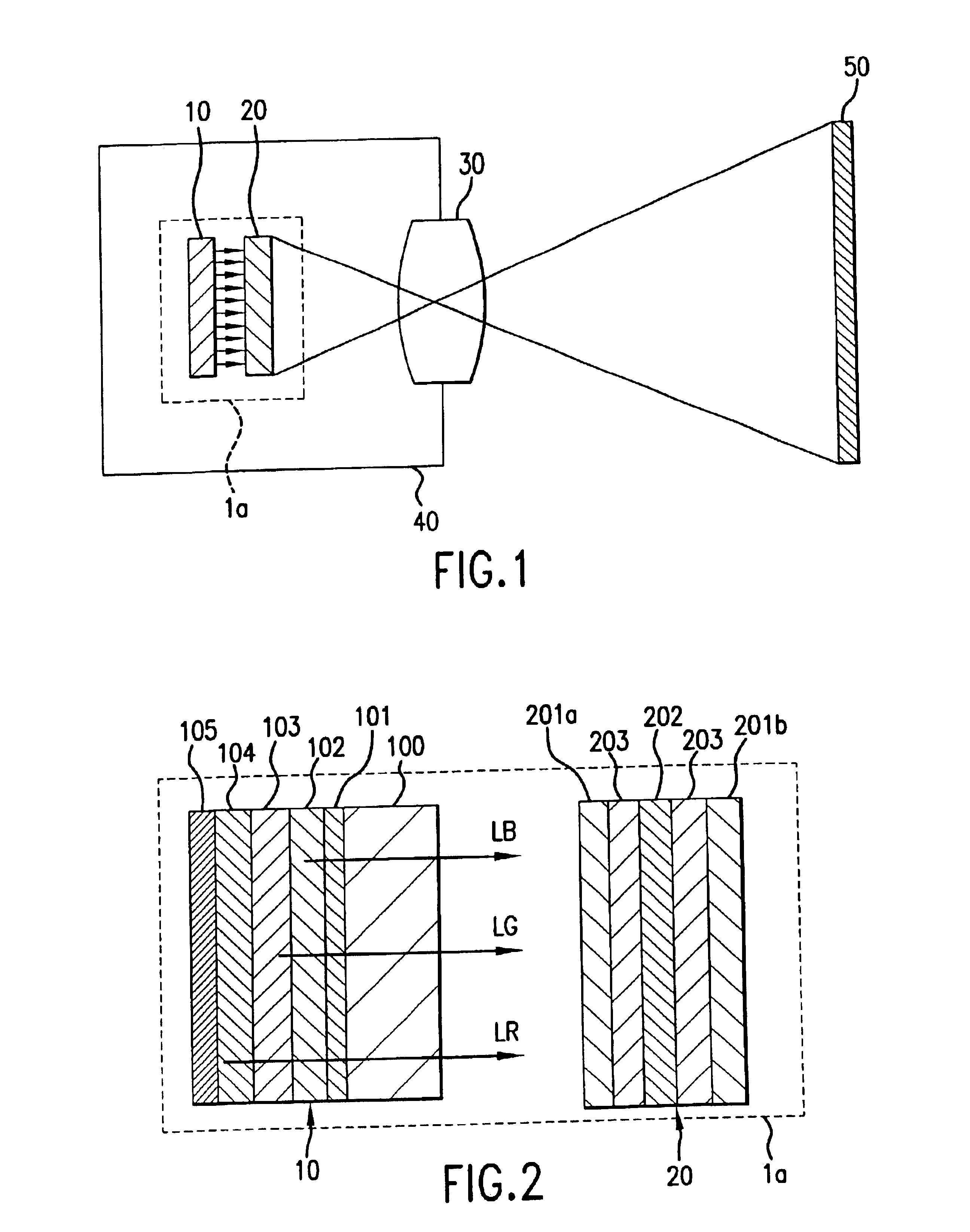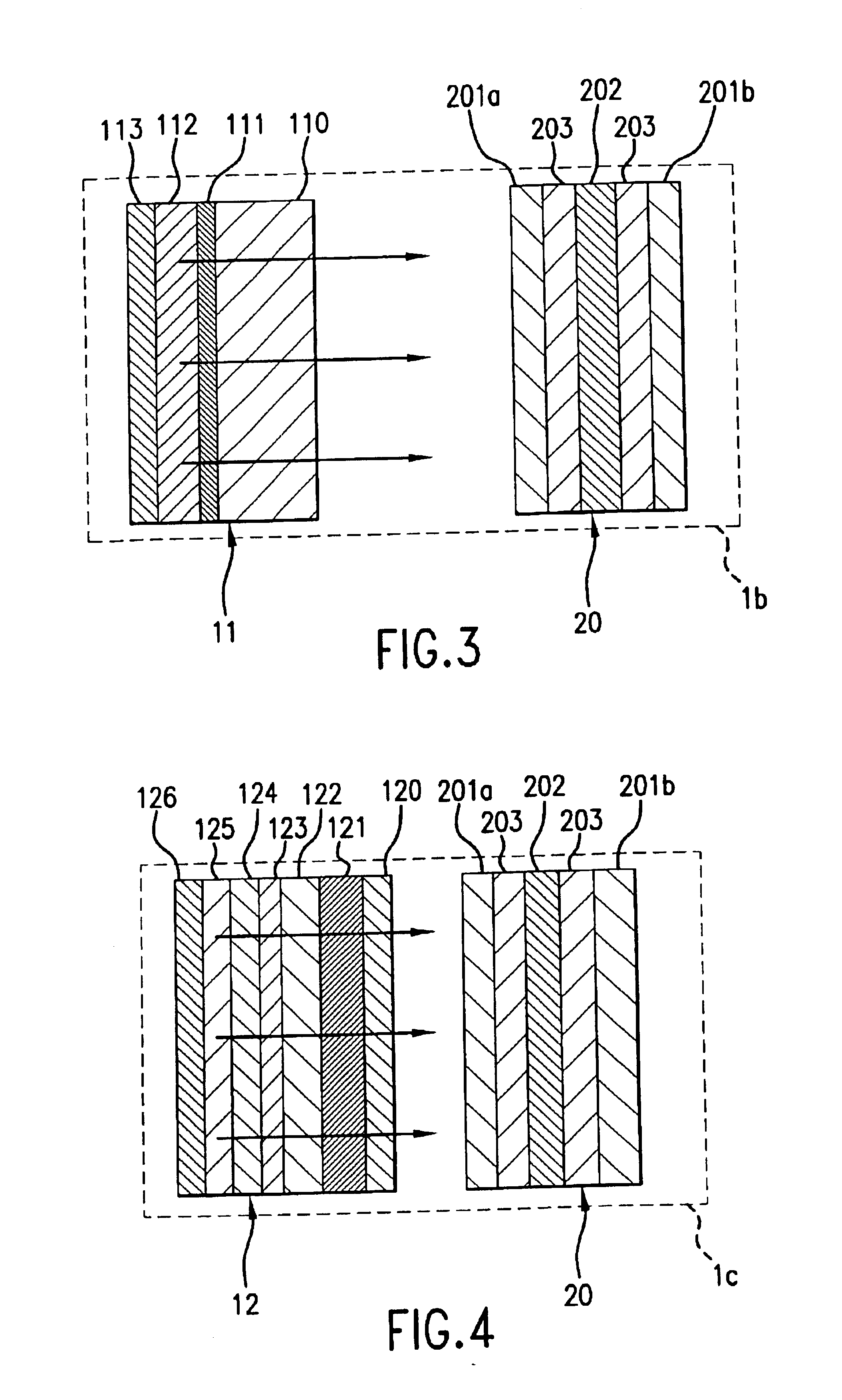Liquid crystal projection device having a liquid crystal display element that includes an electroluminescent element
a projection device and liquid crystal technology, applied in the direction of projection devices, picture reproducers, instruments, etc., can solve the problems of difficult miniaturization of liquid crystal projection devices, difficult to make the diameter of fluorescent tubes etc. small, and achieve the effect of preventing the diminution of light amount, reducing voltage, and bright imag
- Summary
- Abstract
- Description
- Claims
- Application Information
AI Technical Summary
Benefits of technology
Problems solved by technology
Method used
Image
Examples
embodiment 1
[0061]A liquid projection device according to the present invention, as shown in FIG. 1, includes a liquid crystal display element 1a, projection lens 30 and frame 40.
[0062]Projection lens 30 is constituted such that an image emitted from liquid crystal element 1a is imaged on a screen 50. Although only a single projection lens is shown in the Figure, this could of course be constituted by an assembly of a plurality of lenses. Specifically, the projection lens may be constructed so as to for example magnify the image emitted from liquid crystal display element 1a before it is formed on screen 50.
[0063]Frame 40 is constituted as a receptacle for accommodating the entire liquid-crystal projection device and is constituted such that the optical elements are suitably arranged therein. Its material is constituted such that it is unaffected by deformation etc. due to heat emission by liquid crystal display element 1a. Liquid crystal display element 1a, as shown in FIG. 2, includes a...
embodiment 2
[0089]Embodiment 2 of the present invention provides an organic electroluminescent element in which white light is obtained by luminescent layers different from those embodiment 1.
Construction
[0090]A liquid-crystal projection device according to embodiment 2 has the same construction (see FIG. 1) as embodiment 1 described above, except that liquid crystal display element 1b differs from embodiment 1 in that, as shown in FIG. 3, it comprises an organic electroluminescent element 11. The construction of liquid crystal panel 20 is identical with that of the first embodiment so as description thereof is omitted.
[0091]Organic electroluminescent element 11 is constituted by laminating a transparent electrode layer 111, white luminescent layer 112 and reflecting electrode layer 113 on the transparent substrate 110. Transparent substrate 110 is the same as transparent substrate 100 of embodiment 1, transparent electrode layer 111 is the same as transparent electrode layer 101 of embodiment ...
embodiment 3
[0097]Embodiment 3 of the present invention relates to an organic electroluminescent element whose directionality in the direction normal to the light-emitting face is strong due to an optical resonant structure and in which light of specified wavelength is emitted.
Construction
[0098]A liquid-crystal projection device according to embodiment 3 has the same construction as embodiment 1 (see FIG. 1) except for liquid crystal display element 1c. As shown in FIG. 4, liquid crystal display element 1c comprises an organic electroluminescent element 12 and a transparent liquid crystal panel 20. Liquid crystal panel 20 is identical with that of embodiment 1, so further description is omitted.
[0099]Organic electroluminescent element 12 is constituted by successive layers consisting of a transparent substrate 120, a dielectric mirror layer 121, a spacing adjustment layer 122, a transparent electrode layer 123, a positive hole transport layer 124, a luminescent layer 125, and reflecting electro...
PUM
| Property | Measurement | Unit |
|---|---|---|
| drive voltage | aaaaa | aaaaa |
| luminescence wavelength | aaaaa | aaaaa |
| peak luminescence wavelength | aaaaa | aaaaa |
Abstract
Description
Claims
Application Information
 Login to View More
Login to View More - R&D
- Intellectual Property
- Life Sciences
- Materials
- Tech Scout
- Unparalleled Data Quality
- Higher Quality Content
- 60% Fewer Hallucinations
Browse by: Latest US Patents, China's latest patents, Technical Efficacy Thesaurus, Application Domain, Technology Topic, Popular Technical Reports.
© 2025 PatSnap. All rights reserved.Legal|Privacy policy|Modern Slavery Act Transparency Statement|Sitemap|About US| Contact US: help@patsnap.com



